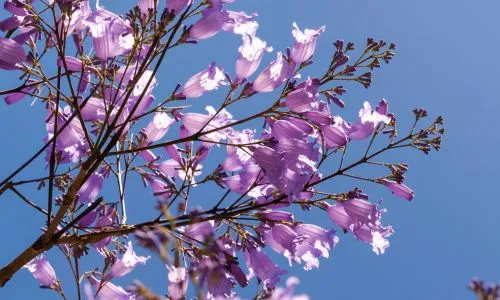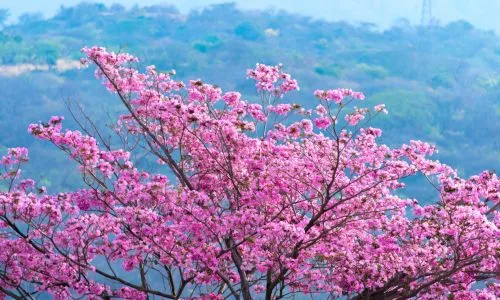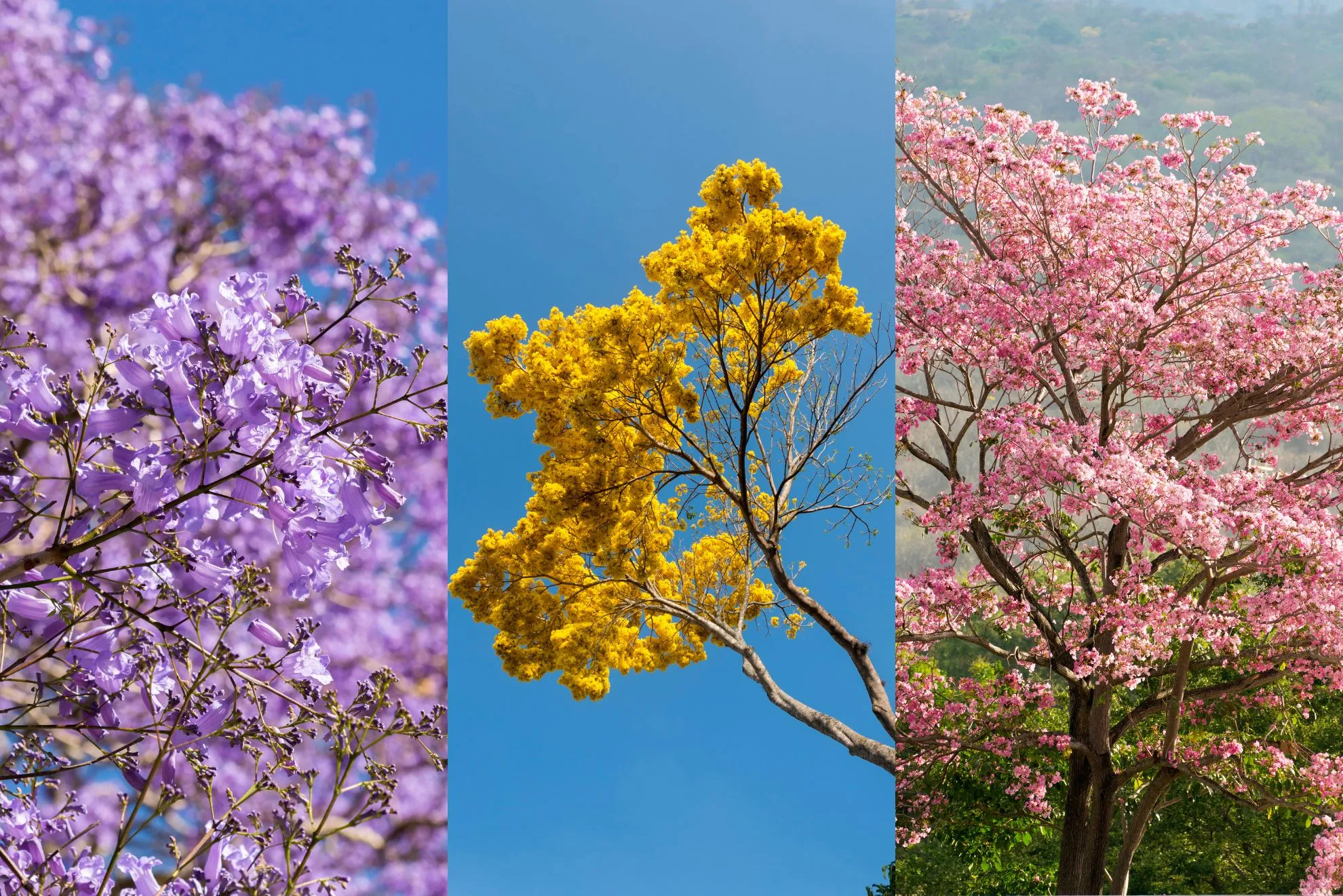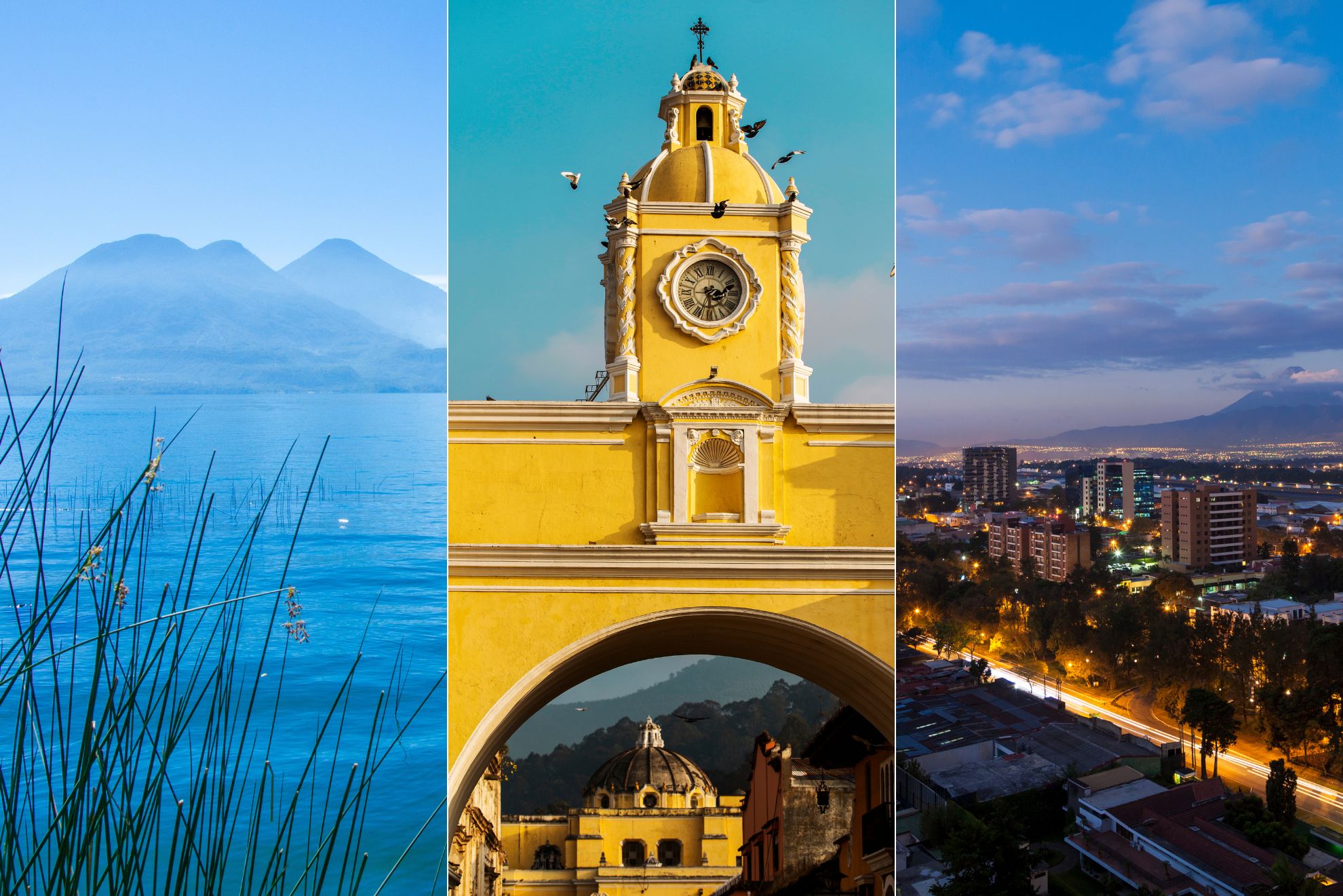Guatemala is a country with rich natural and cultural wealth, hosting a great variety of trees that are a fundamental part of its identity and national landscape. Among them, the Matilisguate, Palo Blanco, Jacaranda, Palo de Fuego, Madrecacao, Guachipilín, and Flamboyant stand out. Each one has unique characteristics that, with the arrival of Holy Week, become main characters, giving a special and colorful touch to the city during that time.
Get to know some of the emblematic trees that bloom during Holy Week in Guatemala:
Jacaranda
The jacarandas, with their trumpet-shaped purple flowers, tint Holy Week in Guatemala with shades of purple. These trees, valued for their beauty, have become a symbol of the city, with nearly 3 thousand planted in the last five years. Their natural qualities attract pollinators such as bees and butterflies, and their flowering mainly occurs in the early months of the year when the weather is warm and humid. They are usually found in Guatemala City, Sacatepéquez, Alta Verapaz, and Huehuetenango. An interesting fact about jacarandas is that there is evidence of their existence in America before the colonial era.

Palo Blanco
The Palo Blanco is famous for its spectacular yellow flowering, which usually occurs in spring or early summer. This fabulous tree can reach heights of up to 35 meters. It is appreciated in Guatemala’s urban landscaping for the beauty of its trumpet-shaped, tubular yellow flowers. In addition to its ornamental value, certain communities use infusions of its bark for medicinal purposes to treat gastrointestinal problems and skin conditions. Palo Blanco is commonly found in departments such as Santa Rosa, Escuintla, Suchitepéquez, Retalhuleu, and the coastal areas of San Marcos and Quetzaltenango.
Matilisguate
The Matilisguate, the national tree of El Salvador, is known for its flowering in shades of pink, coinciding with the arrival of Holy Week. Its flowers, ranging from light pink to intense hues, symbolize the renewal and hope that characterize this time of the year. In many communities, the flowers and leaves of the Matilisguate are used in religious rituals and as part of decorations for processions.

Flamboyant
The Flamboyant is a tropical tree native to Madagascar that has adapted well to the warm regions of Guatemala. Its spectacular red flowering during the season from March to August makes it a visual attraction in the Guatemalan landscape and serves as a reminder of beauty during the most solemn time of the year. In addition to its ornamental value, some parts of the plant have medicinal uses in traditional medicine.
Palo de Fuego
The Palo de Fuego is a tree that can reach up to 20 meters in height, famous for its striking red flowers that appear to be on fire, hence its common name. These flowers attract birds and other pollinators, making it a popular tree in gardens and urban landscapes. In Guatemala, the Palo de Fuego can be found in wooded areas, especially in warm and subtropical climate regions. The flowers are large, with four petals in a striking red color.

Guachipilín
The Guachipilín is found in various regions of the country, especially in wooded areas and warm to subtropical climate zones, with a significant presence in the municipality of Guatemala. The Guachipilín is a medium to large-sized tree that can reach heights of up to 30 meters. Its leaves are compound, and its small flowers are white or yellow, produced in clusters. The Guachipilín is valued for its ability to fix nitrogen in the soil and improve fertility, making it an essential part of agroforestry systems. Additionally, it is used as a source of shade in plantations and as fodder for livestock, as its leaves are nutritious and palatable.
Madrecacao
The Madrecacao, with its delicate pink and lilac flowers, is a tree that takes on special significance in some Guatemalan communities during Holy Week. It is attributed mystical and protective properties, and its presence near places of worship and processions is considered auspicious. Furthermore, the Madrecacao is valued for its ability to restore degraded land, making it a symbol of renewal and regeneration during this time of the year.
The emblematic trees of Guatemala play a crucial role during the celebration of Holy Week, contributing beauty, meaning, and spirituality to the festivities. Their presence in the streets, squares, and places of worship serves as a reminder of the connection between nature and culture in our country, encouraging us to preserve and appreciate the rich natural heritage of the country.
If you plan to visit Guatemala during these dates, contact tour operators, travel agencies, and hotels committed to the best sustainability practices and holding national and international quality tourism certifications.
Make Viaje GT your companion on this sustainable adventure!




